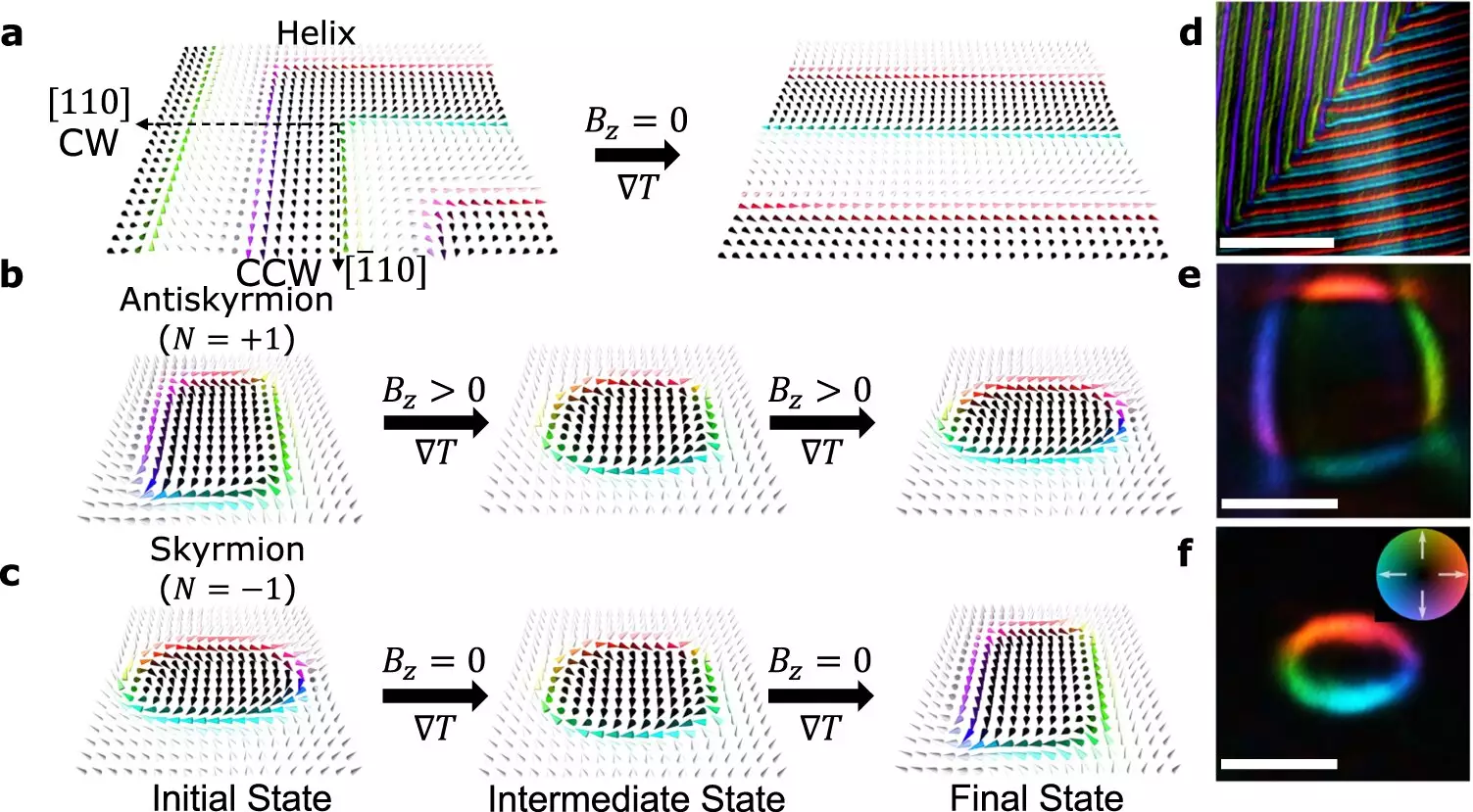In the field of spintronics, researchers from RIKEN and their collaborators have conducted an experiment to explore the potential of using heat and magnetic fields to create transformations between spin textures in a single crystal thin plate device. This research holds significant promise for the development of spintronics devices that require low energy consumption. The study focuses on magnetic vortices, known as skyrmions and antiskyrmions, which have the potential to revolutionize next-generation memory devices. By analyzing the findings, we can better understand the implications and possibilities of using heat gradients for manipulating spin textures.
Exploring Spin Textures
Spin textures, such as skyrmions and antiskyrmions, are intricate patterns that exist within special magnetic materials. These textures are formed due to the arrangement and orientation of the spin of electrons in the material. Skyrmions and antiskyrmions have attracted significant attention in recent years due to their potential applications in memory devices. Skyrmions can be considered as a “1” bit, while antiskyrmions represent a “0” bit. Previous research has primarily focused on using electric current to manipulate and transform these spin textures.
Using Heat Gradients for Transformations
The researchers from RIKEN Center for Emergent Matter Science aimed to investigate whether heat gradients could be used to induce transformations between skyrmions and antiskyrmions. This approach is particularly compelling as it harnesses waste heat, which makes up a significant portion of the energy produced by various sources. By utilizing a focused-ion beam to create a microdevice from a specific single crystal magnet and employing Lorentz scanning microscopy, the researchers were able to analyze the magnetic properties of the material in fine detail.
Room Temperature Transformations
One of the key findings of the study was the successful transformation between spin textures at room temperature. As the researchers applied a temperature gradient and a magnetic field to the crystal, the antiskyrmions first transformed into non-topological bubbles. These bubbles served as an intermediate state between skyrmions and antiskyrmions. As the temperature gradient was further increased, the non-topological bubbles transitioned into stable skyrmions. These skyrmions remained intact even when the thermal gradient was removed.
While the transformation from antiskyrmions to skyrmions was in line with theoretical expectations, the researchers made a surprising observation. They discovered that in the absence of a magnetic field, a thermal gradient actually led to a transformation from skyrmions to antiskyrmions, and these antiskyrmions also remained stable within the material. This discovery opened up new possibilities for utilizing waste heat to manipulate spin textures. It also has significant implications for the development of nonvolatile memory devices that rely on thermal control.
The ability to utilize waste heat for driving transformations between spin textures is an exciting prospect. By harnessing thermal gradients, researchers could potentially build information storage devices that operate at room temperature and consume low energy. These nonvolatile memory devices could revolutionize everyday life by offering more efficient and sustainable options for data storage. The findings of this study lay the foundation for further research into manipulating skyrmions and antiskyrmions in innovative ways.
Future Endeavors
The researchers involved in this study are highly enthusiastic about their findings and plan to continue their exploration of manipulating spin textures. Their future work will focus on developing more efficient methods for thermally controlling antiskyrmion motion. Ultimately, they aim to apply this knowledge to build practical thermospintronic and other spintronics devices that can be integrated into various aspects of our everyday lives. Through continued research and innovation, spintronics devices may become more prevalent and impactful in the future.
The use of heat and magnetic fields to create transformations between spin textures holds great potential for the development of low-energy spintronics devices. By employing heat gradients and analyzing the effects on magnetic vortices like skyrmions and antiskyrmions, researchers are paving the way for innovative information storage solutions. The ability to utilize waste heat for manipulating spin textures at room temperature is a groundbreaking achievement that opens up new avenues of research. As we continue to explore the possibilities of spintronics, it is likely that we will witness further advancements in the field that will shape the future of technology.



Leave a Reply